Since the 2016 election, we have seen a growth in the number of artists involved in political organizing. This has included voter turnout efforts, fundraising, letter writing, and the advocacy for particular issues. Below, Noah Simblist speaks with a group of artists, based in Texas and around the US, about their political organizing work. Some of these artists are also educators and, as a result, the conversation dips into universities as communities of young people and the challenges and opportunities of that context.
The conversation was wide-reaching, but it included an explanation of initiatives like Artists for Democracy, Walk the Walk USA, ADVICE, as well as one artist that ran for political office himself. One topic that comes up is the tension between artists making art about politics versus being politically engaged in a way that is separate from their practice. As the political climate in Texas is increasingly fraught, and linked to national battles about voting rights and restrictions, we sat together to discuss where we are now and where we are headed.
NOAH SIMBLIST (NS): Let’s start with introductions as a way to begin our conversation. I’m currently an associate professor at Virginia Commonwealth University in Richmond, Virginia. I’ve been here for four years. Prior to that, I was in Texas for 14 years — between Dallas and Austin since 2003.
JEFF WILLIAMS (JW): I’m an associate professor at the University of Texas at Austin. Prior to that, I was in Houston for two years for the Core Program Residency. I’ve been in Texas since around 2006.
KYSA JOHNSON (KJ): I’m an artist based in Los Angeles. I’ve been here for six years. Before that, I was in New York for 16. I am here as part of Artists for Democracy, alongside Ry Rocklen. We’ve worked with quite a few of these people over the past few years. And in terms of Texas, my dad lived there when I was little so I was there every summer. And I also show at Nancy Littlejohn Fine Art in Houston with Cruz.
CRUZ ORTIZ (CO): I’m an artist. I was a high school educator for 15 years. I am a proud activist-artist. I have a commitment to the community but I’m rethinking what that word means these days — a commitment to humanitarian issues. So right now that’s voting rights, abolition and immigration.
RY ROCKLEN (RR): I’m part of Artists For Democracy with Kysa Johnson. I was based in Los Angeles for many years but recently moved to Joshua Tree, California. My political gumption started once Trump was elected. I hadn’t been active in any particular way before that. I’ve worked with some of you and I have a great affinity for Texas. I spent some time at UT Austin back in 2010 for a show with the VAC. I look forward to keeping that Texas connection alive.
GIOVANNI VALDERAS (GV): I grew up here in Dallas. I am currently the exhibitions manager at the Fort Worth Community Arts Center. I made work that was a response to the gentrification and the displacement of the Latinx community that I grew up in. Then, I ran for city council, and we got really close. We lost by 479 votes. We did it on a $16,000 budget. The person who won raised over $200,000. That really opened my eyes to how working-class people are continually marginalized and left out of the conversation, and our campaign was about including them.
ANOKA FARUQEE (AF): I live in New Haven, Connecticut. I am the co-director of Graduate Studies of the painting-printmaking department at the Yale School of Art. I’m a painter. I collaborate with my husband, David Driscoll; we make co-authored paintings. I got involved, similar to Ry, after 2016. And then it started to really ramp up last summer when I got involved with Walk the Walk USA, which is an all-volunteer initiative, founded by friends of my sister. My sister is an advocate for youth justice as her day job and invited me to be part of this initiative to fundraise for grassroots organizations that are in specific districts of swing states. We focus on organizations that are empowering communities of color with voter engagement programs and relational organizing.
We are currently starting the 2022 strategy by supporting 10 organizations in 8 states, and Texas is one of those states. We’re fundraising for Texas Organizing Project. There are 13 house seats in Texas that are competitive for 2022, and a governor’s race. So that’s what attracted us to Texas. Our goal for this year or for this first phase is to raise a million dollars — a hundred thousand for each of the 10 orgs — in the next couple of months.
ANGELA DUFRESNE (AD): I’m director of Graduate Painting in Rhode Island School of Design and I worked with Noah and Caitlin Cherry on Archipelago Transfer , a shared visiting artist resource. Similar to Ry and Anoka, 2016 really galvanized it for me when Trump got elected. I helped found Advice Vote 2020 which was a faculty-led project to mobilize students to vote in the 2020 election but also to foster civic engagement through the institutions we teach in. That’s how we connected with Anoka, Walk the Walk, and Artists for Democracy.
LAUREN CROSS (LC): I am an assistant professor in Interdisciplinary Art and Design Studies at the University of North Texas and founded a non-profit in 2013 called WoCA Projects, which focuses on diversifying the contemporary art landscape by building a voice for women artists of color. It started with an actual space. Now that I don’t have a space, it now helps other people to create those spaces within their organization. Whether it’s through my own art practice or through my curatorial work or in my scholarly work, I help to facilitate conversations about anti-racism and gender. I love how Cruz mentioned this notion of community. That question, “What is community?,” has been burning in my heart for a long time now.
KELIY ANDERSON-STALEY (KA): I participated with Angela on the “Get Out the Vote” Zoom parties right before the election. I’m based in Houston. I’m an artist that uses lens-based practices. I also am an associate professor at The University of Houston and I am the incoming grad director of all the school of visual art MFA program. I feel like my activism is within my practice as an educator, building bridges between my amazing students who are doing a lot of very political, activist work and the greater Houston community, which has so many strong non-profits in the arts, like Project Row Houses, Lawndale Art Center, or The Houston Center for Photography. I work at a public university and so many of the laws that the Texas lawmakers pass affect me and my students directly.
NS: Jumping off of Cruz and Lauren’s point about this notion of art and community, there’s a lot of talk around art and politics in relation to the political content of one’s work. But one of the challenges that a lot of you have been engaged with is electoral politics and how artists might leverage their communities to have an impact on elections. Can any of you speak to specific strategies that have worked for you?
LC: One example is to offer a space for political candidates or political activists. One local candidate was trying to find a space to have a conversation with women of color about voting. She felt like there were a lot of misconceptions about how to vote or even how to register to vote. She wanted to create an open bipartisan space and that was very easy to support.
KJ: One of the things that Artists for Democracy did for the last midterm elections was partner with Swing Left to get galleries to sponsor buses to go canvassing in local swing districts. We went canvassing for Katie Porter who won by a slim margin. I think we knocked on almost 2000 doors that day. We brought over 100 artists who were afraid to go canvassing because it’s scary and you don’t know how to do it and a basic question is: how do you get there? But it became a community event. We had breakfast beforehand in one of the galleries. It was fun and had a very direct impact. That was exciting.
GV: I think engagement is key and I think voters are always in search of authenticity. My political run for office became the extension of my practice in a sense that I absorbed all the colors and culture of my community and we used that in our print materials. Our district is 74% Latinx and Dallas is dead last in all 50 U.S. major cities in voting. So there was an opportunity to take advantage of the visual language that our community understood. I assembled an amazing group of artists and we went to work. Our material was much different even when we canvassed. We had real conversations. We avoided political jargon because we recognized our demographic was the working poor so we used language they could understand.
AF: Artists hustle all the time. We understand social media and visual language better than most. We understand this idea about authentic connection that Giovanni brought up. Artists can cut through the bullshit really quickly because they’ve been trained to do that in art school, to ask: “Is this registering? I’ve been interested in the different skill sets that organizers and artists have — where they overlap and where they diverge.
Artists have come up with creative ways to fundraise through art auctions or t-shirt sales. I know Angela did a t-shirt fundraiser. From small to big, from one print to a huge auction that a couple of artists organized that ended up bringing in tens of thousands of dollars. I think the kind of DIY energy that comes from being an artist is something that organizers really understand. But I love how pragmatic and centered every organizer that I’ve met is — stability for the long haul. That’s something we can learn a lot from as artists. Along with the hustle is also a lot of rejection and a lot of losing. I think that organizers get that. They’re in this for 5 to 10 to 20 years.
NS: Ry and Kysa, can you talk about the lecture series format that Artists for Democracy used?
RR: Yeah, one thing that we’ve pursued is to create a network of artists that is enticing. I found that the idea of becoming politically involved, particularly for some of the students at CalArts, was a bit repellent, and so Artists for Democracy is a sweetener. We say, “Come be politically involved and you can hang out with all these cool people on the bus,” or “Come be politically involved and you could show some stuff at our little table at Frieze, LA.” But then with the artist lecture series, we figured we needed to get some extraordinary artists to entice students to come listen to them talk about their work, but also talk about the election and hear a little bit from us along the way. And so we looked to friends of ours who have really solid name recognition, in particular, to break through the noise of all the Zoom of 2020.
KJ: We’d buttress the talk with practical information. So at the beginning of every lecture was an introduction like, “We’re talking about this issue today and here’s why it’s important.” And “Here are some things that you can do.” And then we have the artist talk and then we finish with an action item. So it sandwiched information in a way that we could reach these students who might not otherwise pay attention.
NS: Jeff or Kelly, I wonder if you can speak a little bit to how you found your students to be politically engaged?
JW: Angela sent a note saying, “What are your students doing? Can you send us examples?” At UT there were some exceptional efforts to help get out the vote. A group of undergrads worked to get students to register to vote at their UT address, as many were still registered at their family home, which might be outside Austin. They did this focusing on two swing districts that encompass and surround UT, both gerrymandered to dilute the impact of student votes, and both were very close in polling. It was a well-designed strategy and an amazing effort.
KA: I have a lot of activist students. Last summer, I was teaching a class while the city, and particularly, the Third Ward of Houston, was protesting George Floyd’s murder. The photographs that they made of the resistance and of the protest included tough experiences. Police would mace and gas them without provocation.
Also, at the public university, faculty are still very worried about political feelings. I think it would be great for more people in the arts to get more information about what is legal to talk about in the classroom. I support my students who register other people to vote. They’re setting up tables on campus. I would just like to figure out how to support them more and also how to be more vocal myself. I would also love to be able to encourage my colleagues to be more vocal. It’s just a matter of figuring out the right language to be nonpartisan and inclusive versus silence, which is what often happens in academia.
LC: Regarding the lecture series as a framework, one of the things that I and a colleague at UNT did in response to George Floyd’s death — and this is thinking as Black faculty in academia trying to respond to and process what happened — it was very traumatizing for us — we asked, “how do we build a greater sense of language about social justice frameworks?” It’s interesting considering what’s happening now within our state. It almost feels a little prophetic that we thought that we needed to explain Critical Race Theory and to explain what anti-racism and afrofuturism actually is. A lot of our students in art and design are interested in being politically active. But we wanted to equip them with the tools to do that work. So that’s a way in which we used the lecture series as a teachable tool that wouldn’t only exist within an academic setting but was open to the public as well.
NS: Cruz, one thing I wanted to ask you about are the projects that you’ve done that use printmaking as a tool for disseminating a message, whether it’s for certain causes or even particular candidates.
CO: I’ve been doing this for a really long time. I always feel like I’m the old guy in the room. It’s been a commitment. Honestly, it came from my punk rock upbringing. I mean that’s really where I started a lot of my political thought. My approach to making work has always been DIY in that way. You know, you only need three chords to start a band. By the way, this would be a badass band. Just throwing that idea out there.
One of the things that we immediately saw, doing advocacy work for different issues, was the way that political candidates engaged design. We pitched political candidates like, “Dude, your sign sucks. Your website is embarrassing. We can help with that.” Have any of you been to a precinct meeting or a democratic convention? They are the worst. It’s embarrassing. God bless them all, but they’re probably the most awkward group of folks.
You know, one of the bigger campaigns that we worked on was with Beto O’Rourke for his run for senate, and we built these mobile screen-printing carts and we were on the road with him. Literally, my entire studio, the people we employ here at the shop, were running around Texas, screen printing for Beto. One day in Dallas; the next day, we’re in Laredo. We were just always on the road. It got to a point where we’d walk into a stadium and people were yelling our names.We ended up raising so much money just on those little things. We did that for the Obama campaign twice. We did that, of course, for Hillary.
NS: Cruz, you’re bringing up an interesting tension between a DIY spirit that’s really small scale, versus the huge scale of these issues that we want to have an impact on. And Anoka, I often think about Walk the Walk functioning like a Political Action Committee but when I think of a PAC, I think of those that have hundreds of millions of dollars to make an impact on the national stage. But then I was thinking about Giovanni’s story, about a few hundred votes making a difference in a local race and the possibility of a much smaller budget making that kind of impact. I wonder if anyone has anything to say about this question of scale and its relationship to impact.
AF: I think Walk the Walk’s mission is to look where not everyone else is looking and to let other people around the country shine a spotlight on the issues. I think this is where the left has failed — not paying attention for so many years to state house races. Now we’re seeing the effects of these Republican-controlled gerrymandered districts and these voter suppression bills..
We mostly do it with grassroots organizations. But in the general election, after we had closed the funding gaps of a bunch of these orgs and they could no longer use the money so close to the election, we switched very quickly, and pivoted in October to identify down ballot candidates of color in state legislature races to direct people’s donations there. So this idea of really looking on the micro level and whether or not we’re local to that area or not, we can support by diverting money. I don’t like fundraising. But what I’m realizing is that fundraising is storytelling. It’s community-building.
I also think there’s a lot of hubris on the part of the left. Sometimes, a DIY spirit can be taken too far. Like, “Oh I’m going to fly in,” or “I’m going to be the one who calls or talks to that voter.” And I think, “Well maybe the voter doesn’t want to talk to you.” Like, “Sorry. Maybe you’re not the best person for this job.” One of the things about Walk the Walk is being humble enough to say, “The people within that community know that community. It’s our place to support and learn and listen but it’s not our place to impose.” We want to be involved and engaged and we want to be listening, learning and building a coalition of mutual respect and accountability, but not a one-way kind of situation that becomes very inauthentic and problematic.
GV: This is a really big issue with political groups who endorse a candidate. I think they fail to realize that model isn’t always the best for emerging candidates. For example, when I was going through endorsement processes, there were tons of questions, 12-page questionnaires, and they wanted to know everything in detail. But on the flipside of that, a candidate who’s well-funded has teams working on that questionnaire and submitting it. But for a grassroots candidate like me, I did it alone with the help of a friend.
I think, for me, the strategy is to start hyper-local. How do we empower a community who has been marginalized for decades? We start small. There’s that street that’s completely dark. What if we organize and we got a street light there? And that’s a small win. And if we continue to make these small wins then we can go for bigger stuff.
NS: That street light story makes me think of this project that Robert Pruitt, Autumn Knight, and a bunch of artists loosely connected to Project Row Houses were involved in about 10 years ago. If I remember correctly, it was called the Mobile Block Party and included playing a domino game to occupy this one corner in the Third Ward in Houston because it had been taken over by crime. I think that this project grew out of socially engaged practices and as such was an art project with social goals. Sometimes, an artist’s impulse is to make art in a way that affects the community’s needs. But then on the other hand, Giovanni, you’re an artist who ran for office, which wasn’t an art project, right? What do you all think about these various approaches to art and politics?
LC: I really identify with what Giovanni is saying and what Cruz said earlier about what community is. Sometimes you have to step away from the art and then say, “What do people actually need?” I’m born and raised in Texas and I grew up in Houston. I went to church right across the street from Project Row Houses. So I saw that model exactly. I feel like we have to be honest with ourselves. I have done projects for art that gave me an art result which is gentrification and displacement. It didn’t bring about the change I wanted. So then I realized that you have to talk to people about what they really need, and have that deeper connection.
RR: One thing that I wanted to address with Artists for Democracy was that not all artists are making political work. I looked to Artists for Democracy as a place for artists to be politically involved when their work wasn’t. I think Cruz’s work is a good template where artists can make campaign posters. You can just do political work with your artistry.
KJ: It was an effort to reach out to the people we knew, those peer-to-peer connections, and allow them to use their bodies, for lack of a better word, if they weren’t using their art, to literally do the thing that needed to be done in a very direct pragmatic way. And that felt empowering.
AF: I’ve been thinking a lot about this question and it relates to performative activism or virtue signaling, and how art plays into that, how speech plays into that, how social media plays into that. Contemplation and reflection are central to art making. We need ideas in order to have aspirations. But when contemplation or reflection becomes the thing that exempts you from practice, that’s when it becomes corrupt. We walk that line in our contemporary culture on a daily basis with social media and all the different ways in which we perform for the world. So it really is a challenge to ask yourself, “Am I doing this so I can appear virtuous? And am I signaling? Am I performing?,” or, “Is there some practice in day-to-day life that I’m performing in a different way that’s meaningful and that has a deeper kind of power?” I don’t want to give up contemplation and reflection. I will never give it up. But the moment that it takes the place of practice and being in the world and its material conditions, that’s where the problem arises for me.


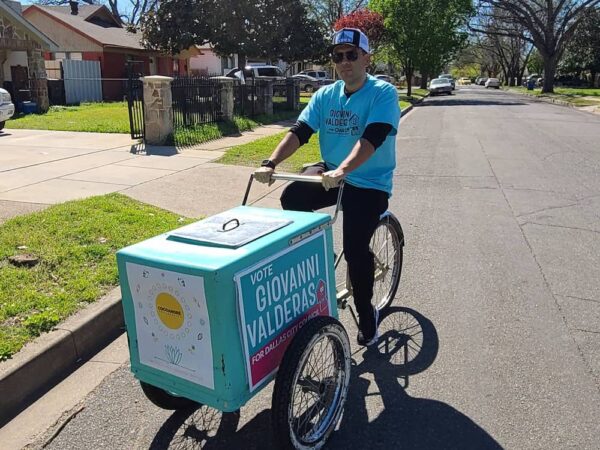
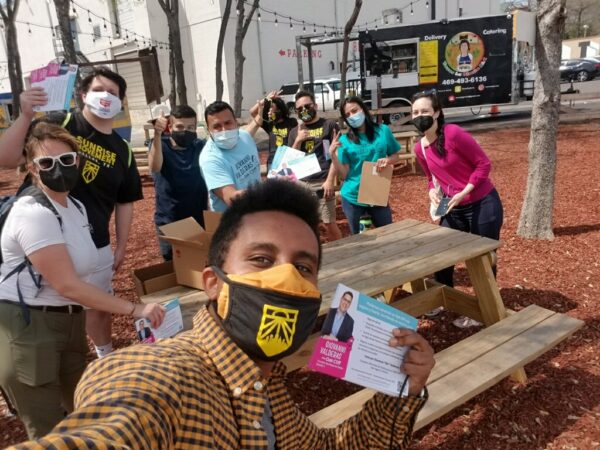
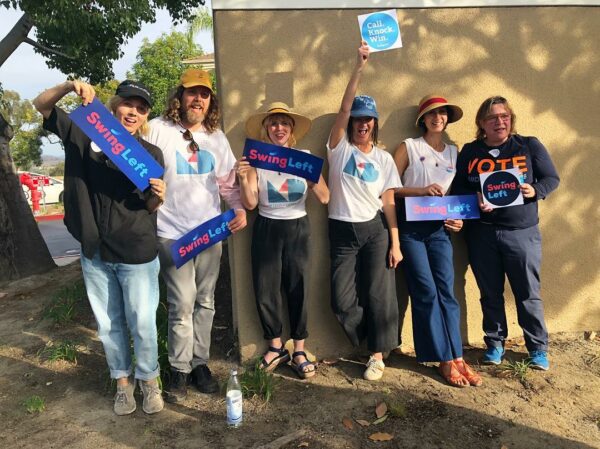
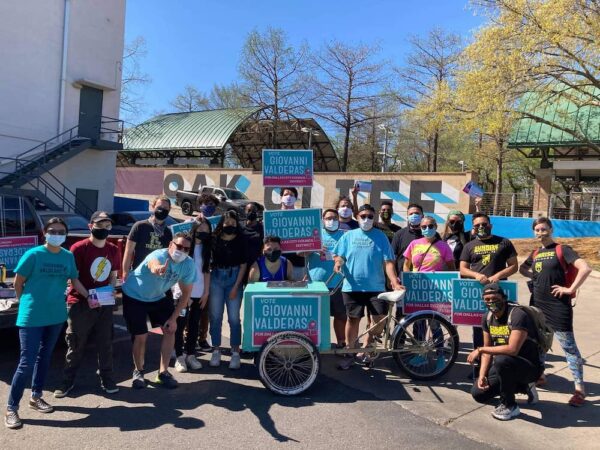
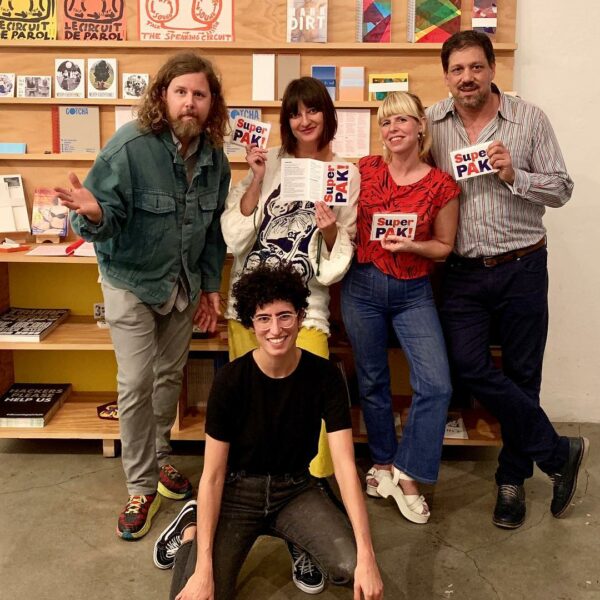

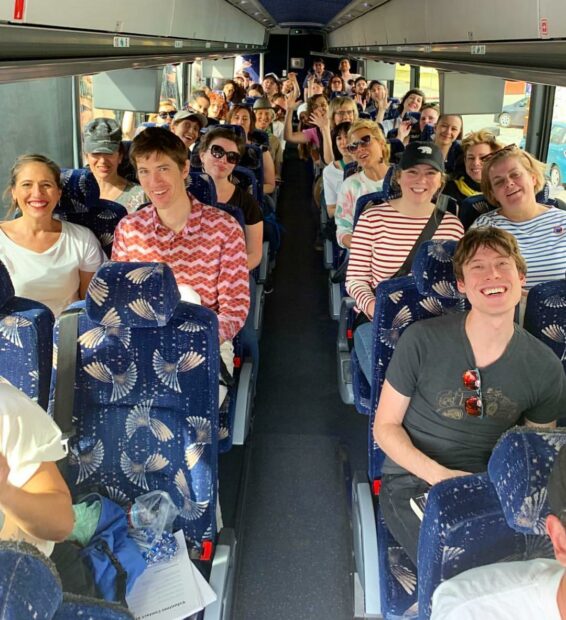

3 comments
Thank you for this wonderful conversation – so many interesting points of departure!
I’d like to push one of them just a bit further, to unpack a sort of flip-side w.r.t. “performative activism” – an aspect I’ve been calling “action as metaphor.”
I fully concur with concerns about purportedly political or social practices that are more about making artists and their funders feel good, or artwashing, or that even backfire in the form of gentrification or the like – these at best drain resources from more effective work, and their “performative” or symbolic effects work in a deceptive fashion, to make it look like someone’s doing good when in fact they’re not.
But I believe art always has a performative or non-literal aspect. And not only can activist or social works do – or not do – actual good on the ground for particular communities or individuals, but they can operate symbolically in a positive, non-deceptive way, to inspire others who may have no direct contact with the project to think about things differently. The march from Selma to Montgomery was literally about voting rights, but I’d guess King knew well that it would also operate in performative, symbolic ways – and in fact those effects continue to this day. If we think about some of the politically-inflected art projects we admire most, it’s clear they’re effective not only in doing good on the ground but because they also successfully harness this performative or metaphorical potential. The symbolic value of Giovanni’s run for City Council survives even if he lost (though of course it would be even more powerful if he’s won!)
I think most artists who work in this field have at least an inchoate grasp of all this, but I find it interesting and possibly helpful to unpack it a bit and think consciously about the likely effects of our works on both literal and non-literal levels.
Noah, thank you so much for this article. Incredibly informative, valuable questions and responses, and important information to share. Appreciate you and the work you do as well as those you interviewed and so many others.
It was great to see this article. So good, I will finally make a contribution to Glasstire which I haven’t done in too long. When we had a studio (at the Silos) we gave a percentage of our Second Saturday profits to progressive women candidates, had candidate information handy to give to the public and held voter registration drives before elections. I also appreciated the information on TOP.